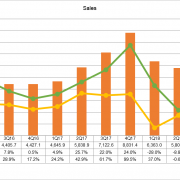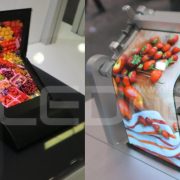China’s ZTE released its ‘AXON M’ last 17th. AXON M connected two 5.2-in HD LCDs hinged together to further enhance consumer convenience.

<ZTE’s AXON M, Source: ZTE Website>
According to ZTE official website, AXON M can be folded at various angles, and placed on a table with two users.
US IT media CNET considered AXON M convenient as two applications may be run at once with one screen to play videos and another to check e-mails or Facebook.
Sony, Kyocera, and other set makers have released similar smartphones. However, these have not received the spotlight in the market due to issues such as hinge and display durability, absence of exclusive apps, battery consumption, and such.
ZTE installed Corilla’s 5th-Generation Gorilla Glass to enhance durability of smart phones, but AXON M shows to be continuously questioned on its durability due to its out-folding method (two displays folded outward), which is less durable than the in-folding method.
In addition, despite the increase battery consumption of AXON M for large screen displays and such, its battery has a capacity of only 3,810 mAh. Considering a 5,000 mAh battery to be applied to the 5.5-in HD LCD on the ZTE Nubia N2 released last June, it is expected to have many consumers feel a lack of battery capacity in the AXON M.
The AXON M expands to 6.5 inches wide when opened using a hinge, but because there is a gap in the middle, it is difficult to call it a perfect foldable smartphone.
As consumer needs for bigger screens increase, the developing speed of foldable smartphones is accelerating as well.
At the SID 2017 in Los Angeles, US, AU Optronics and BOE have unveiled foldable displays under development. Both companies have folded one flexible OLED in a mechanical method, but the size and folding method were somewhat different (Au Optronics in 5-inch in-folding and BOE in 5.5 inch out-folding).

<AU Optronics 5-in foldable OLED (left) and BOE’s 5.5-in foldable OLED (right)>
Also, Samsung Electronics filed a patent on the 20th on the ‘Flexible Electronic Device’ where one side bends through a hinge, and Samsung Electronics Manager Ko, Dongjin commented during the Galaxy Note8 Release, “Next year’s wireless business road map includes foldable smartphones.”
With ZTE’s release, it is expected to have more intense competitions for market preoccupation for development of foldable smart phones.
On the other hand, UBi Research is expected to start mass production of foldable OLED from 2019 through “Key issue and Market Analysis for Foldable OLED” Report published in 2016.
















































